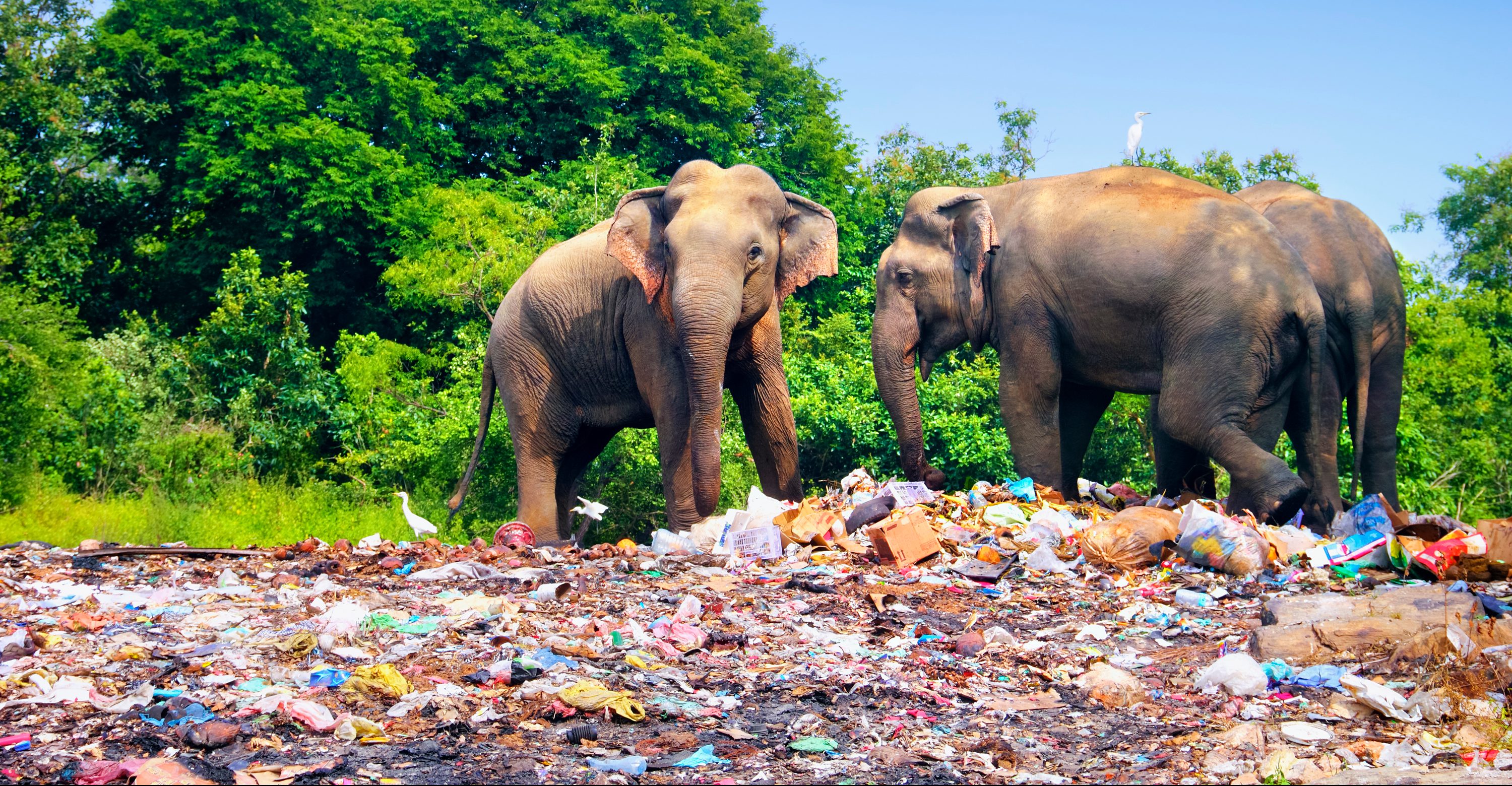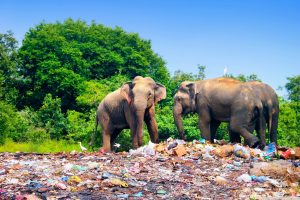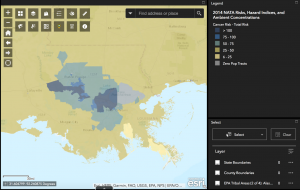Plastics and Power
—
This post is accompanied by the second video lecture in the Unwrapping Plastics series, available here: Part 2: Impacts of Plastic on People and Planet
—
Plastic is powerful. This is true for plastics themselves, plastic pollution, and the plastics industry. This power stems from the linkage between the plastics industry and the fossil fuel industry. In the last post, we covered the relationship between plastics and climate change. This post will explore plastics and power through the lens of political geography. First, we’ll discuss the impacts of National Sword on the geography of plastics. We’ll then cover the theories of waste distancing and waste colonialism and explore the implications of these theories for plastics and power.
In January 2018, China abruptly stopped accepting imports of recyclables, including plastic scrap, in what is known as the National Sword policy. The global waste trade system, which was predicated on long-term Chinese recycling imports, had to respond to this change quickly. Sixty percent of the plastic exported by G7 countries (including the US, Germany, and Japan) went to China and Hong Kong in 2017.1 In the first half of 2018, the same two countries imported a meager 10% of waste.2
The decline in Chinese plastic imports shifted the burden of waste processing to other developing countries, the majority of which are in Southeast Asia.3 This means that the burden of waste processing has now been placed on countries that are less historically responsible for waste generation than developed countries. In 2018, imports of plastic waste in Thailand increased by more than 1000%, and Vietnam, Indonesia, and Malaysia (which today imports the most waste by volume) also saw dramatic increases.4 5 This has strained recycling infrastructures, triggered bans on imports (in the case of Thailand), and led to the development of a black market in plastic scrap. These black markets are marketed as a source of income to the jobless and underemployed, and place vulnerable members of society at high risk (GAIA 2019).6
Elephants at an open dump site adjacent to Minneriya National Park, Sri Lanka. Photo by Natalia Davidovich.
The first theory relevant to understanding the power of plastic is waste distancing. Waste distancing, as first presented by Clapp in 2002, refers to the mental and geographic distancing of waste from both consumers and producers.7 It emphasizes that when trash is thrown “away,” that “away” is a place. Think about your own trash and recycling bins – do you know exactly where your discards end up once they’re picked up by your hauler?
Waste distancing analyzes waste through a consumption lens. The theory takes a global North perspective on waste, as the focus is on consumers who have the capacity to remove themselves from waste. (The global North refers to countries that are historically culturally and politically powerful, while global South refers to previously colonized countries).
Clapp (2002) argues that this distancing has arisen in the context of rapid globalization and neoliberal (free-market) economic policies8 and is furthered by a lack of awareness and understanding about post-consumer waste. Taken together, this allows global North consumers to be distanced – separated – from responsibility.9
This distancing means that the plastics crisis is fundamentally geographical: plastic is produced and concentrated at different levels at a global scale, and flows of plastic pollution through markets are malleable with time and space. The impacts of plastic pollution, too, are unevenly distributed. Places, and communities, that are most vulnerable to plastic pollution are often least equipped to manage it.
Again, away is a place, and people live there; when thinking about the geography of plastics, and waste more generally, it’s necessary to critically examine how and why certain locales and communities have been identified as “aways.” These “aways” are viewed as destinations for plastic, and are typically located in or near communities of color and low-income communities.10
Waste colonialism, a theory within the systems-oriented field of discard studies, elaborates upon this idea. Waste colonialism argues that the global waste system is premised on the identification of people and places as “sinks” to which powerful elites are entitled. Waste systems are therefore fundamentally intertwined with territoriality, access to land, and the dispossession of Indigenous communities.11 This access is assumed at all stages in the process.
This places the most marginalized members of society at higher risk for the negative health consequences of plastic pollution than those who have been able to distance themselves from waste. Liboiron (2018) argues that waste colonialism enables blaming the global South for waste exported from the global North: again, developing countries are most burdened by pollution, even though developed countries are historically responsible for the majority of the world’s waste.12
The extraction of fossil fuel resources for plastic production is colonial in nature because this extraction is predicated on access to land (the Dakota Access Pipeline, which runs in close proximity to the Standing Rock Reservation, is one example of this). This is why resource management is political. It has even been argued that recycling is colonial: because it does not address production, recycling allows for the continuation of resource extraction from Indigenous land that would otherwise be “wasted.”13
Cancer risk rates along the corridor between New Orleans and Baton Rouge, Louisiana, known as Cancer Alley. Via US EPA’s 2014 National Air Toxics Assessments (NATA) Map.
So, too, is plastic production concentrated in the most vulnerable communities. Jurisdictions in Cancer Alley — a corridor along the Mississippi River between Baton Rouge and New Orleans that is a hotspot for more than 150 petrochemical manufacturing plants – have the highest cancer risk rate out of all states in the U.S.14 Reserve, a parish in Cancer Alley that has a cancer risk rate “50 times the national average,” is 60% Black and has a per-capita income of less than $19,000.15
Cancer Alley, and the decisions that allowed such high concentrations of toxicity to occur, is an environmental injustice. The largest incineration plant in the U.S. being located in Chester, Pennsylvania, a community where three out of four residents are Black, is an example of environmental racism – a concept that refers to how communities of color are disproportionately affected by environmentally harmful practices such as pollution.16 17
This post has begun to answer the question, “who decides what gets wasted, and who is affected by the process of wasting?” In the next post, “Plastics, Waste, and Systems,” we will further explore the systems that have allowed plastic — in all of its elements — to become politically powerful, including neoliberal capitalism, globalization, and colonialism.
—
The second video lecture in the Unwrapping Plastics series, Part 2: Impacts of Plastic on People and Planet, explores the impacts of plastic on the environment and on people’s health and livelihood.
The third installment in the Unwrapping Plastics series, Plastics and Systems, will be available on the MRWMD website soon. Click here to return to the Unwrapping Plastics homepage.
Please reach out to Andrew Jarvis at adjarvis@ucla.edu if you have any questions.
—
Footnotes
1. Hook, L. and Reed, J. (2018). “Why the world’s recycling system stopped working.” Financial Times. https://www.ft.com/content/360e2524-d71a-11e8-a854-33d6f82e62f8
2. Hook & Reed (2018).
3. Global Alliance for Incinerator Alternatives (GAIA). (2019). Discarded: Communities on the Frontlines of the Global Plastic Crisis. 46 pages. https://www.breakfreefromplastic.org/bffp_reports/discarded-communities-on-the-frontlines-of-the-global-plastic-crisis/
4. Hook & Reed (2018).
5. GAIA (2019).
6. Ibid.
7. Clapp, J. 2002. “The Distancing of Waste: Overconsumption in a Global Economy”. In Confronting Consumption, Cambridge, MA: MIT Press, p. 155-176. https://mitpress.mit.edu/books/confronting-consumption.
8. See Post 3: Plastics and Systems for further discussion of globalization, neoliberalism, and colonialism.
9. Clapp (2002).
10. Liboiron, M. 2018. “Waste colonialism.” Discard Studies. https://discardstudies.com/2018/11/01/waste-colonialism/
11. Liboiron (2018).
12. Ibid.
13. Ibid.
14. Lartey, J. and Laughland, O. 2019. Almost every household has someone that has died of cancer. The Guardian. https://www.theguardian.com/us-news/ng-interactive/2019/may/06/cancertown-louisana-reserve-special-report
15. Lartey & Laughland (2019).
16. Berkovitz, C. 2020. Environmental Racism Has Left Black Communities Especially Vulnerable to COVID-19. The Century Foundation. https://tcf.org/content/commentary/environmental-racism-left-black-communities-especially-vulnerable-covid-19/
17. For further reading on environmental racism, disposability, and white supremacy, visit https://www.sierraclub.org/sierra/racism-killing-planet




